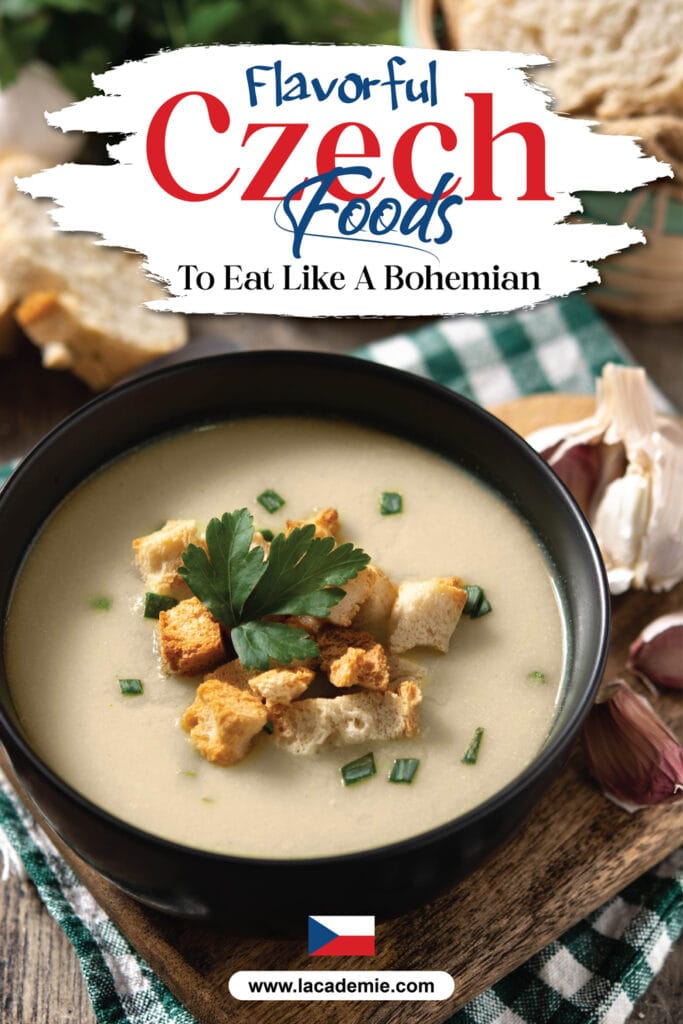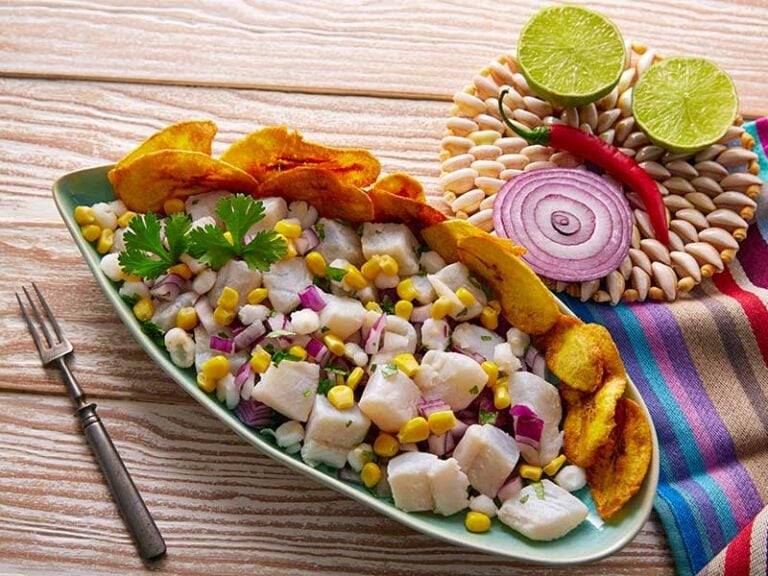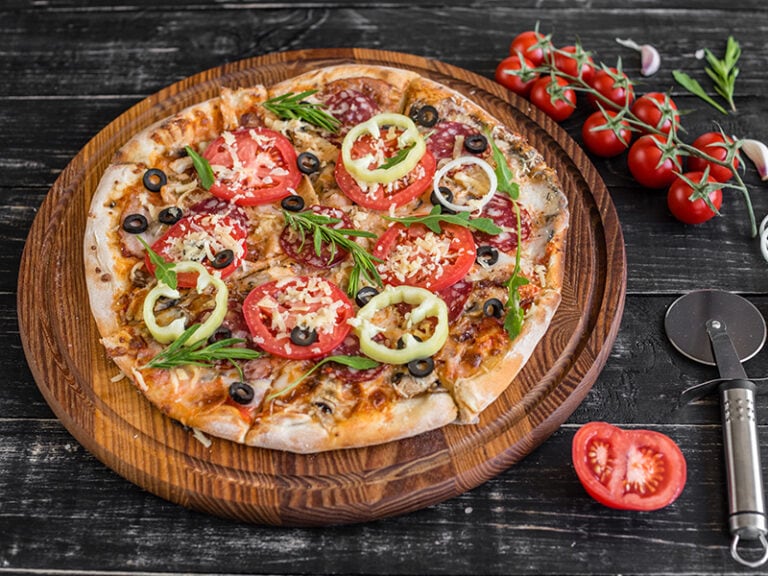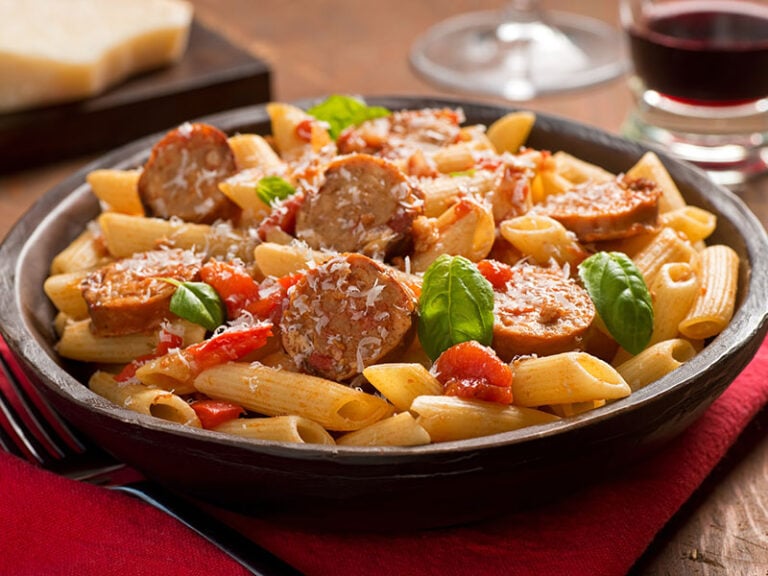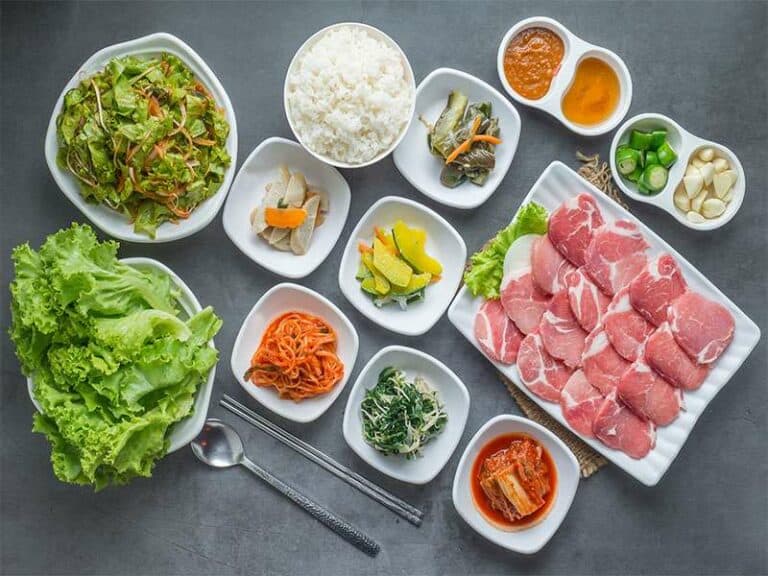Czech foods are more contemplatable than ever if you dare to dive in. Laying in the center of Europe, this country shares countless dishes with its neighboring regions. There are more Czech-origin culinary delicacies than you ever expect.
“Dobrou chut!” is what you can always hear when traveling to this beautiful hill region, and you can straightforwardly translate it as “Bon appétit”. But if you’re curious about what the Czechs are cheering while saying those words, keep on scrolling!
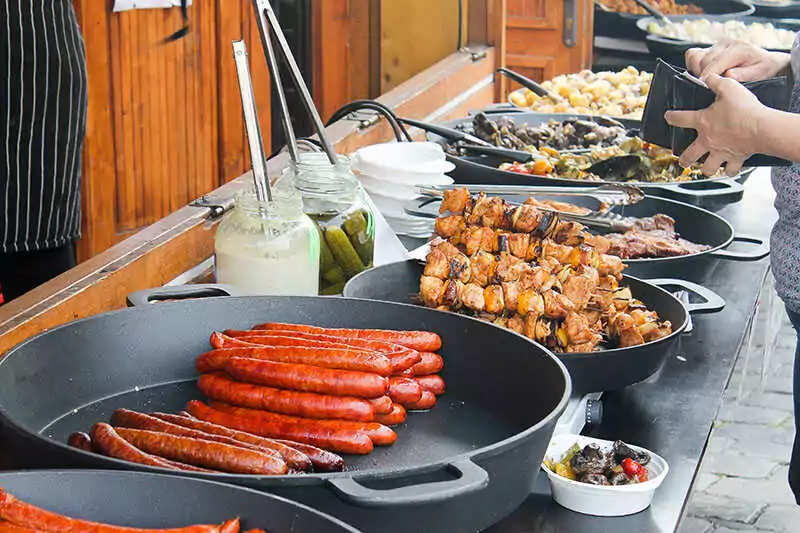
During the 19th century, when the Czech met the world-famous French cuisine, which influenced their way of serving meals. Czech meals are then served to follow the order of appetizers, fish courses, meat-based dishes, and multiple sweets choices afterward.
1. Česnečka Polévka – Garlic Soup
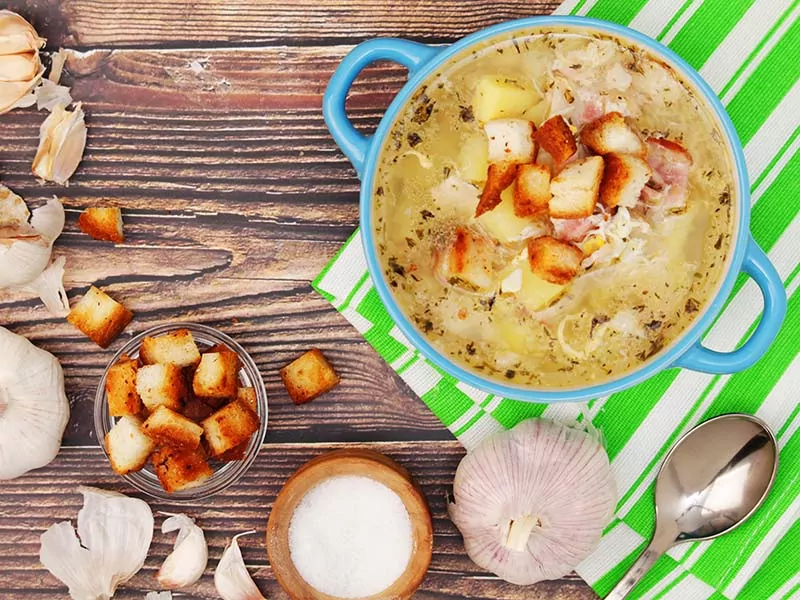
Starting with a centuries-old soup, Cesnecka Polevka is a traditional soup with a garlic base, with chopped pork and sausage usually being solid additions. Crouton is also a significant ingredient inside or beside the broth.
You can also see this soup with a raw egg added at the end of the cooking process. Due to the convenience and affordability, Cesnecka was among the “soup for the poor” in the 1910s.
Apart from being an appetizer, Cesnecka Polevka is also a part of the pleasing dinner in the Czech Republic. Locals also consider it a wonderful cure for fevers, as well as an excellent sobering agent.
2. Kulajda – Mushroom Soup
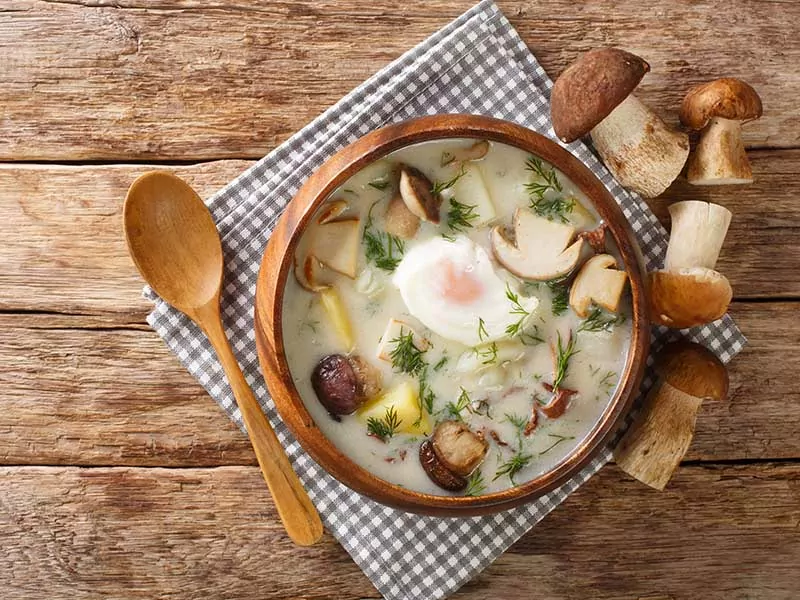
Used to be an indigenous soup of the Southern Bohemia region during the cold months, you now can find Kulajda on almost any Czech restaurant menu. This soup has a creamy texture that comes from roux, with the major ingredients being dill, mushroom, and potatoes.
In the old days, Czechs would harvest fresh mushrooms during the summer and dry them to use in the winter, and Kulajda utilized those. Poached egg or sour cream is also added to this soup on some particular occasions.
3. Zelňačka – Sauerkraut Soup/Cabbage Soup
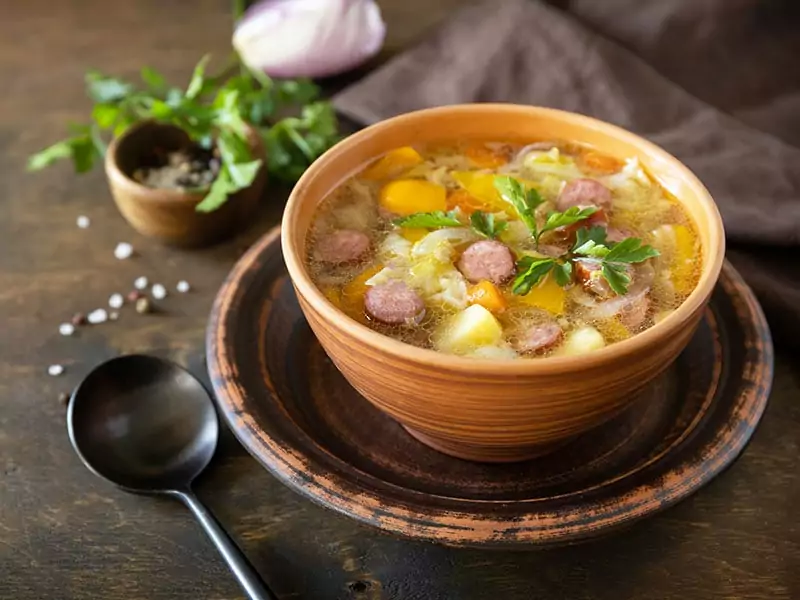
Zelnacka or Zelná Polévka is a traditional Czech sauerkraut soup that can be a course starter or a main dish. In case you haven’t heard about sauerkraut before, it’s a shredded and fermented cabbage widely used in European regions.
Therefore, this hearty soup has a sour taste, which can sometimes be more intense due to the addition of sour cream. Other ingredients are potatoes, carrots, and Czech smoked meat, interchangeably with chopped sausages.
You can also find the vegetarian version of this soup, which uses mushrooms to substitute for meat bases.
4. Fazolová Polévka – Bean Soup
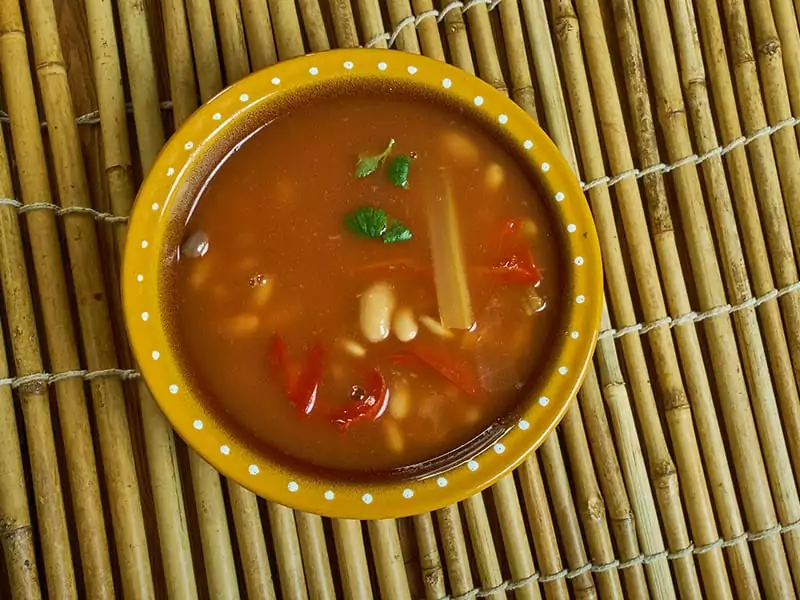
Another healthy Czech dish for appetizers is Fazolova Polevka. It’s a rustic soup that consists of smoked meat, hearty root vegetables, and beans. And the traditional dish of Fazolova Polevka usually calls for white beans.
You can also find other versions of bean soup throughout Europe and even the Middle Eastern. Since this soup was present back in the Roman period, it’s hard to tell where it was first cooked.
Despite that, you can easily order this soup in almost all traditional restaurants in Czech, and Fazolova Polevla is served chiefly hot. Some “not-so-secret” recipes add sour cream or flour to thicken the broth.
5. Smažený Sýr – Fried Cheese
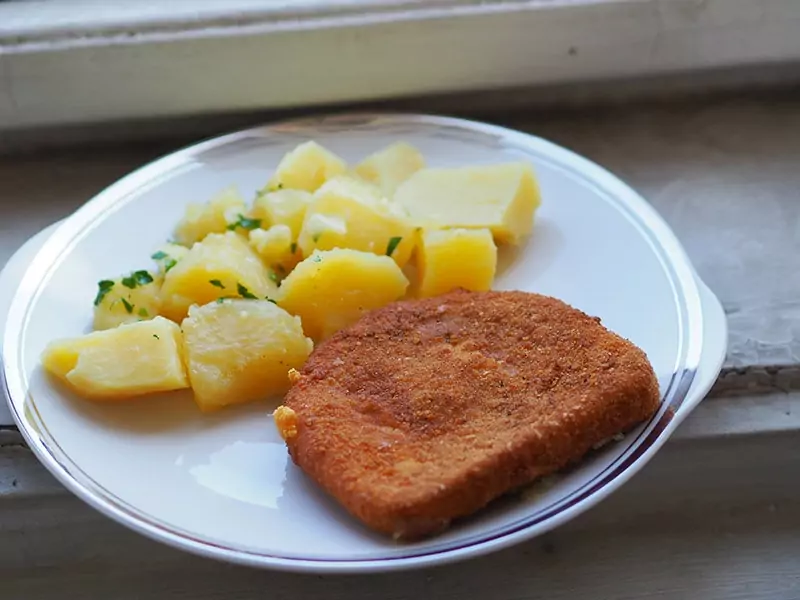
If you’re a fan of cheese or richness, you should definitely try the famous Czech smažený sýr. It’s basically a block of fried cheese coated with egg and bread crumbs.
The origin of this recipe is believed to be French however, there are countless versions of it throughout the world. It’s also known as Smažák in Czech, and the locals usually prefer using Eden cheese for the base, served aside with some meat and French fries.
6. Vepřo Knedlo Zelo – Roast Pork, Dumplings, and Sauerkraut
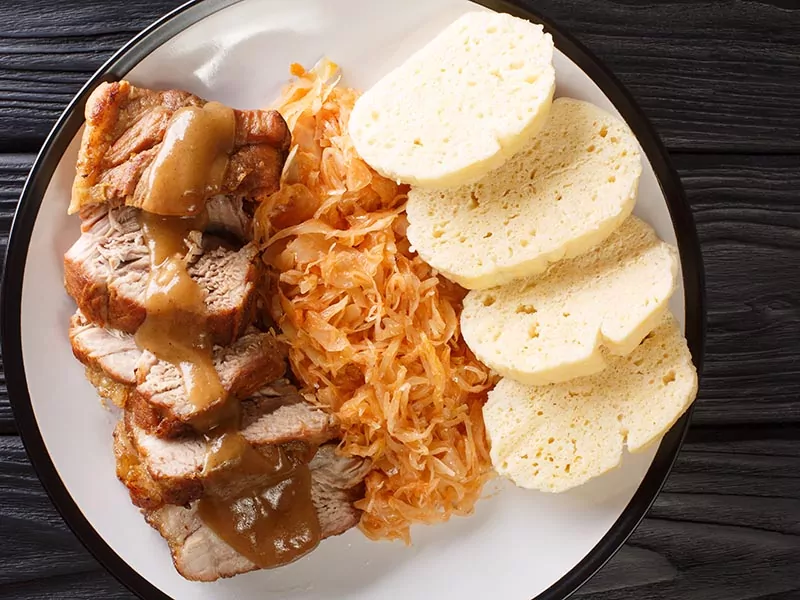
The Czechs literally called this dish by the main elements on the plate. Vepro means roasted pork, and its leaked juice during the toasting process will be reduced to serve as a sauce for the dish.
Knedlo stands for Czech bread dumpling, which may sometimes switch with potato dumpling. And Zelo is a Czech pickled cabbage dish also known as sauerkraut.
Though it’s now widely used and is among the most famous dishes in the Czech Republic, Vepro Knedlo Zelo first appeared in Germany.
7. Guláš – Czech Goulash
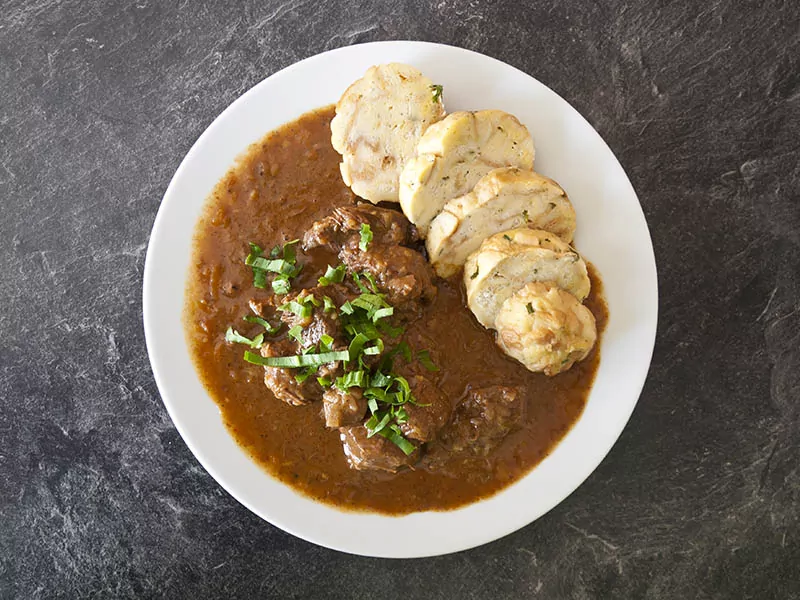
You may mistake this traditional stew of Czech for the famous goulash from Hungarian traditional cuisine. In fact, unlike other countries that learned this dish during the 20th century, Czech Guláš origin was traceable in the 9th century.
Regardless of the origin, this dish consists of diced pork or beef, with a lot of onions and other spices, such as caraway, paprika, garlic, etc.
This national dish also goes with slices of bread or potato dumpling. And Czechs are likely to enjoy it with a giant cup of chilled beer.
Guess where has the best Gulas in the Czech Republic? Here is the answer!
8. Kyselo – Sourdough Soup
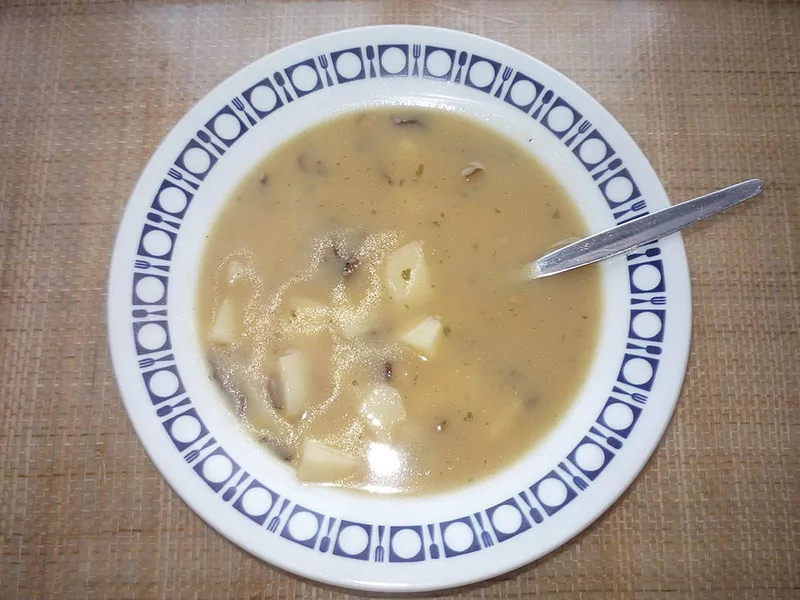
The Northern Bohemia mountain area of Krkonoše is the homeland of this dish. Basically, Kyselo is a counterpart of Zurek in Polish, but of course, with different cultural herbs and spices.
You can find countless recipes for Czech Kyselo. Still, the primary ingredients are fermented rye flour, potatoes, mushrooms, and other spices, but mostly caraway – also known as Czech’s national spice.
9. Moravský Vrabec – Moravian Sparrow
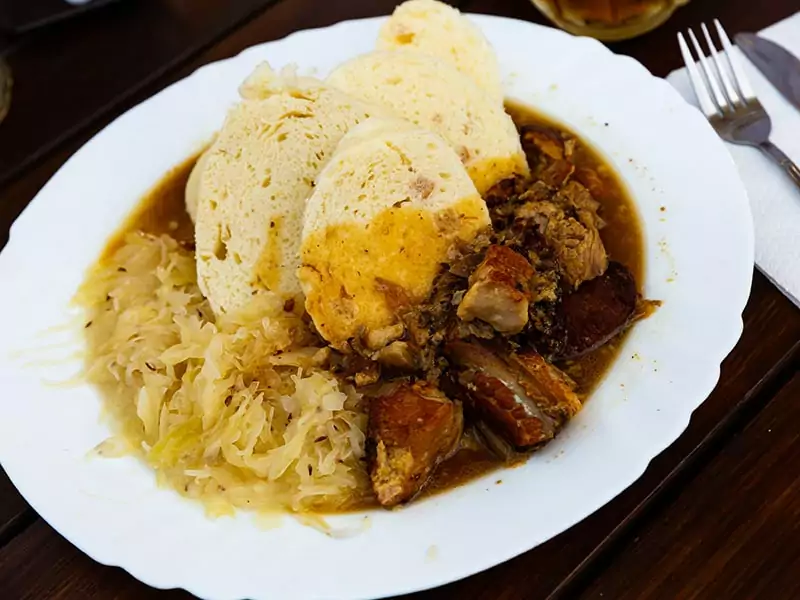
As the name has suggested, this traditional Czech lunch meal originates from Moravia – a region in the east of Czech. And don’t be freaking out already! This dish contains no sparrow at all.
Moravský Vrabec and Vepřo Knedlo Zelo are interchangeable names for the same dish consisting of roasted pork, sauerkraut, and bread dumpling.
The key differences are that Moravský Vrabec tends to be greasier to imitate the fatness of the sparrow, and the roasted pork is also cut into chunks.
10. Sekaná – Meatloaf
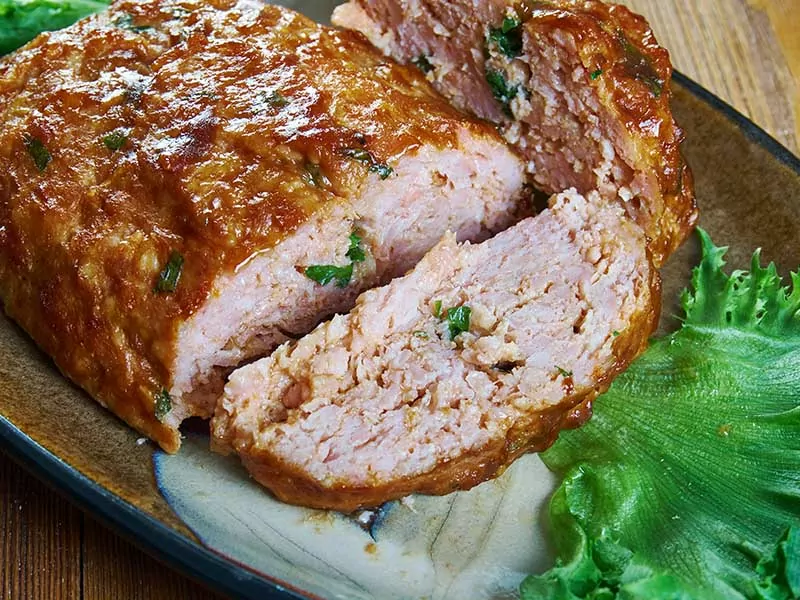
The origin of this dish is traceable back to the 5th century. Though it’s now present in many countries and regions across the globe, Czech Sekana is an outstanding version of baked meatloaf that should be on your bucket list.
While Sekana also includes common ingredients such as minced beef or pork, onions, eggs, bread crumbs, the flavor is enhanced by a touch of caraway and marjoram – which states the taste of Czech.
Pickled vegetables, sausages, or boiled eggs can sometimes be added to the meatloaf before baking. The leakages during the baking process would sometimes be poured over Sekana when served, along with some mashed potatoes.
11. Řízek – Breaded Cutlet Schnitzel
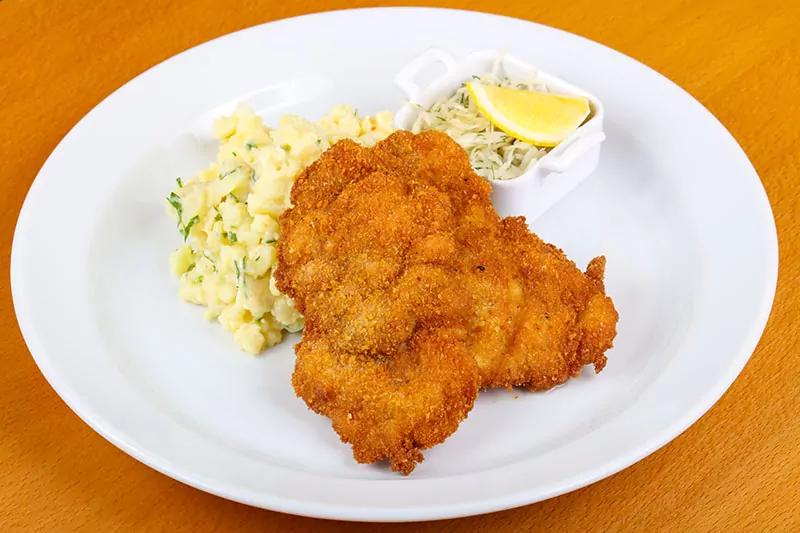
Whether the schnitzel originated from Germany, Australia, or Israel is still debated. At least you can tell that this is rather an international dish than an original food from the Czech. However, it was deeply rooted in Czechia’s heart, enough to become a traditional dish.
Talking about tradition, the standard Rizek is made of pork, mostly chops or loins, though you can also find the veal, beef, or chicken versions.
Rizek is a typical dish that you can find almost everywhere across the country, and it usually pairs with mashed potatoes. However, most Czech families have their own way of making and enjoying Rizek.
12. Svíčková Na Smetaně – Beef Sirloin in Sour Cream Sauce
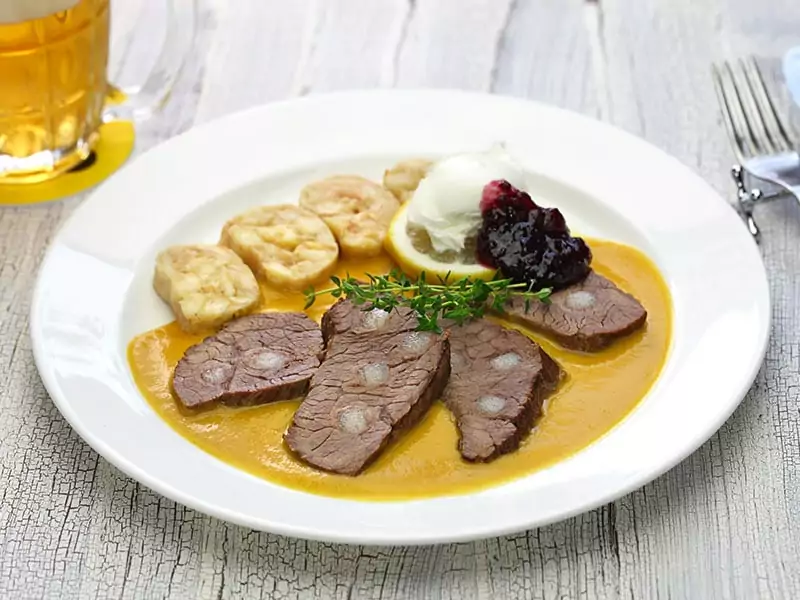
Though you can enjoy this dish in many restaurants across the Czech, it’s actually a culinary tradition for weddings! And it’ll be served as a main dish, accompanied by a few slices of lemon and, once again, bread dumplings.
What made Czechs proud of this dish was the sauce. The Smetane sauce uses carrots, parsley roots, celeriac, and onions, and it gets mixed or blended with full-fat cream. National herbs like marjoram or caraway are excellent additions as well.
13. Bryndzové Halušky – Potato Dumplings with Bryndza Cheese
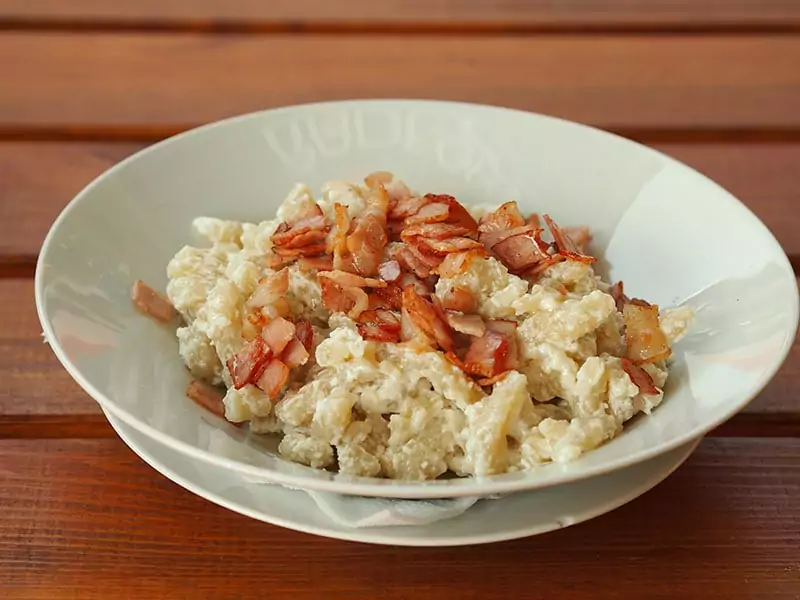
Though this is among the national dishes of Slovakia, Bryndzove Halusk has also signed its name on Czech gastronomy sincerely. Think of Halusky as a Sloviac version of Italian Gnocchi, and Bryndzove is a cultural sheep cheese.
Traditionally, this dish will include bacon or smoked meat. However, you can also find the vegetarian version of Bryndzove Halusky, which is substituted with fried onions, and it’s definitely worth the try.
14. Houbový Kuba – Barley with Mushrooms
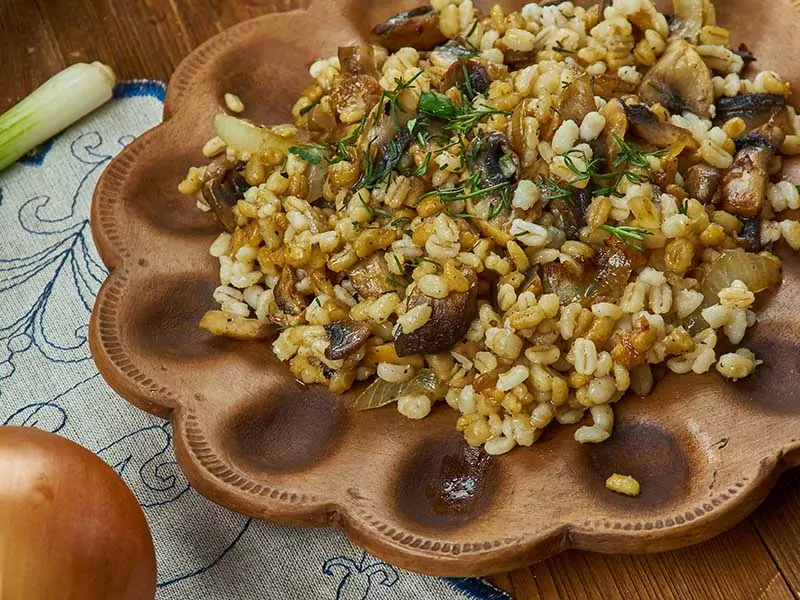
Whether a vegetarian or a vegan, Houbovy Kuba is not something you should miss. It is literally a dish full of barley cereal, slices of dried mushroom, caramelized onions, herbs, and spices such as the traditional marjoram and caraway.
It was only used in Southern Bohemia during the cold in the old days. Due to the lack of supplies back then, wild mushrooms, mostly the brown bolete, were used. And it is also well-known as a meal for the poor.
Back today, you can find it on the menu of most Czech vegetarian restaurants, with multiple types of mushrooms served.
15. Knedlíky S Ovocem – Fruit Dumplings
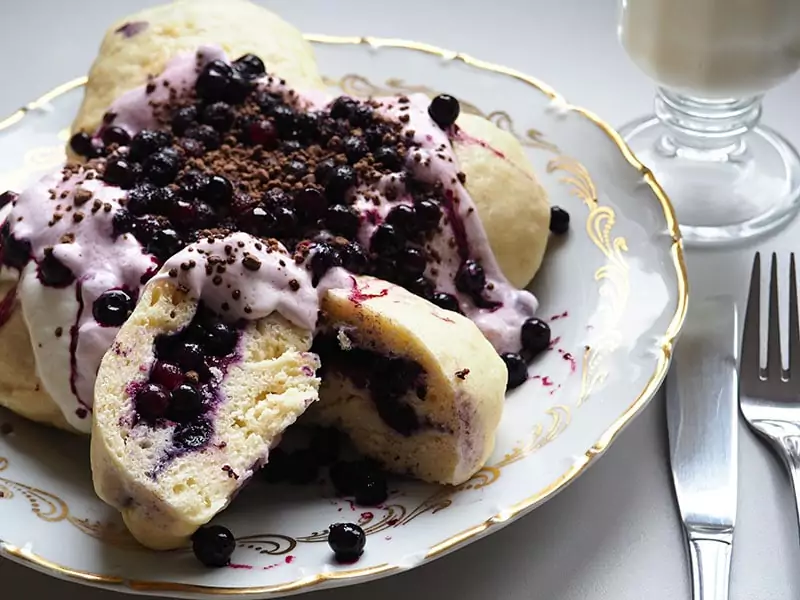
Dumplings have appeared multiple times in this article as an accompaniment, but this one stands out on its own as a beautiful sweet treat from Czech. The dough of this dumpling mainly consists of flour, yeast, egg, milk, sugar, and a small pinch of salt.
The fillings or glazing are varied; you can have it with blueberries, strawberries, apricots, cherries, but the most popular version is plum. Many Czechs use these sweet dumplings as a main meal by adding icing sugar, whipped cream, and cinnamon on top.
16. Žemlovka/Zemlbába – Czech Bread Pudding
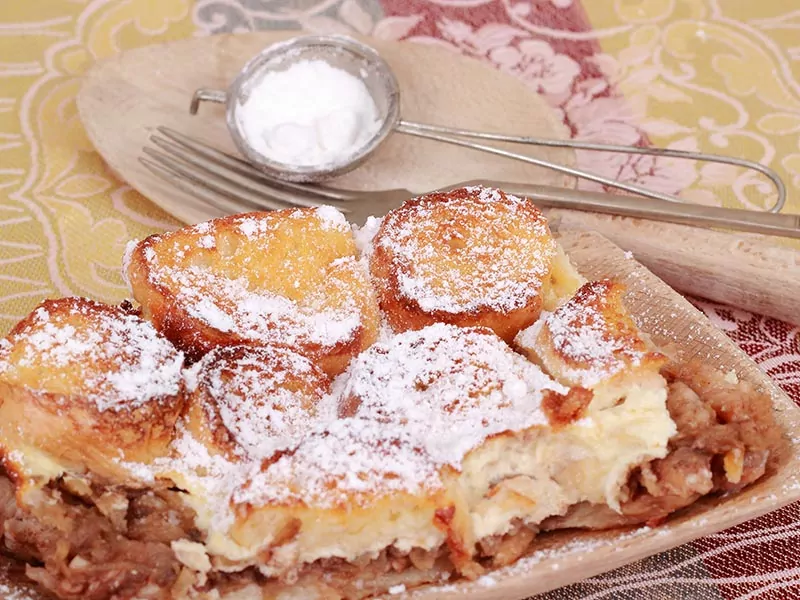
This is among the most popular sweet treats in Czech school canteens or cafeterias. Zemlovka is slices of soft white bread rolls combined with fresh fruit and confectionery.
Bread slices will be placed at the bottom lining and the top layer, while traditionally, the filling is chopped apples and cinnamon. However, you can also find multiple flavors of Zemlovka nowadays, including pear, cherry, plum, strawberry, raisins, or even quark cheese.
17. Buchty – Sweet Buns
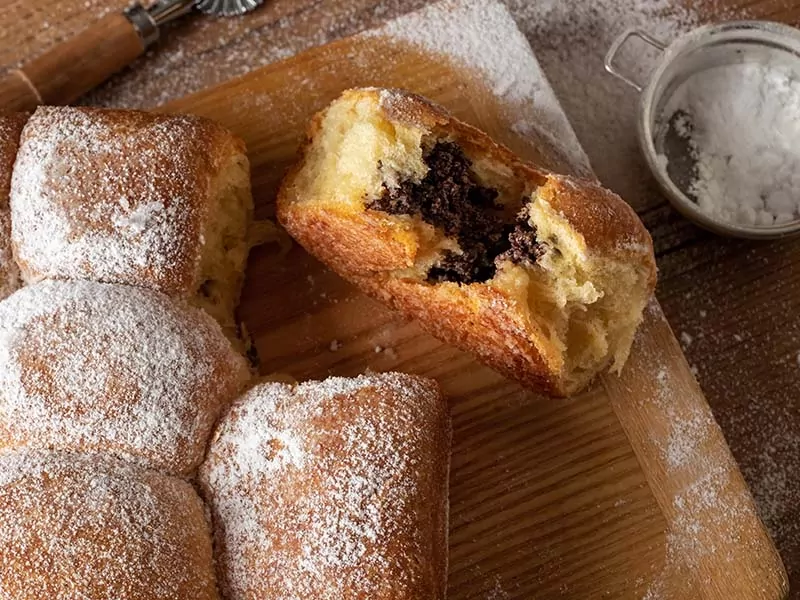
As mentioned at the article’s beginning, Czech shares some of its dishes with the neighboring nations, but Buchty is an original recipe from the Czech.
This delectable dessert uses sweet yeasted dough. And you may find that the baking method of Buchty is pretty much similar to the modern bread rolls but with preserved fruit fillings.
The outcome has a golden brown exterior along with a desired spongy texture. The traditional recipes of Buchty sometimes call for poppy seed paste, cream, or even both.
18. Krupicová Kaše – Cream of Semolina/Wheat
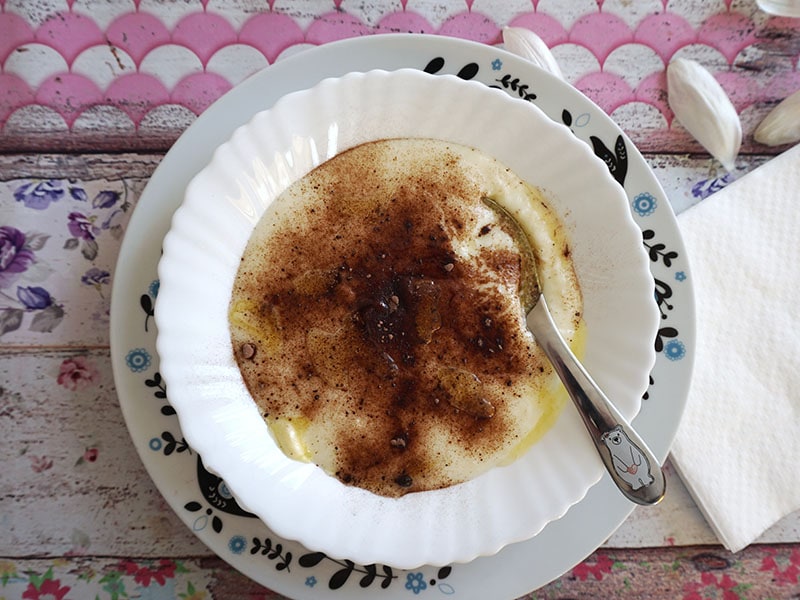
This typical Czech pudding is mainly made of semolina wheat, cooked in boiling water and milk. Sometimes milk takes all the jobs or is just absent.
This dish originated during the Roman period. Nowadays, Czechs would have it in not just dessert but many daily courses.
You can find countless recipes for this pudding. However, the Czech locals would add raisins, rum, walnuts, and fresh fruits in their Krupicová kaše, but the powdered cocoa topping is the most important.
19. Valašský Frgál/Wallachian Frgál – Pizza-Shaped Pie
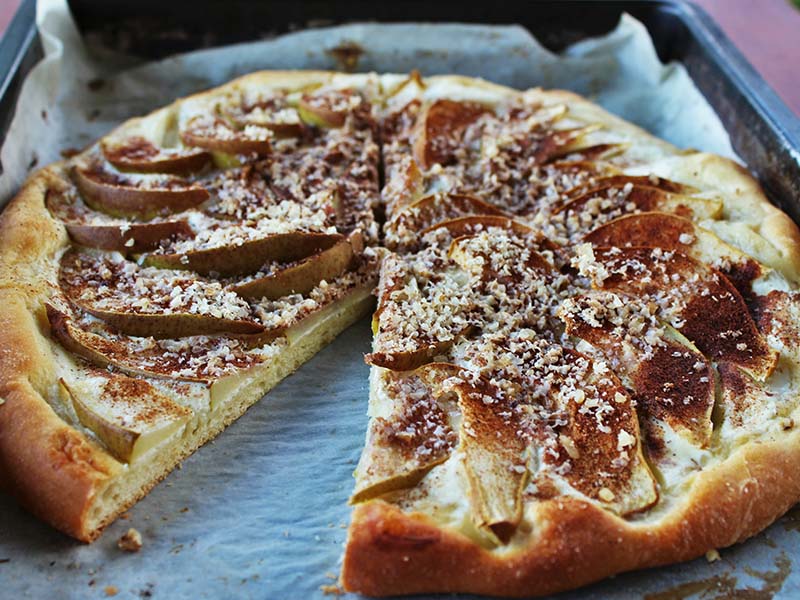
Valassky Frgal or Wallachian Frgal is a flat round-shaped pastry stemming from Wallachia – a region of Romania.
This pastry usually appears 30 centimeters across, like a large-sized pizza but is topped with a lot of fruits. Traditionally, the toppings are dried pears, cinnamon, gingerbread crumbs, and sugar.
However, since Valassky Frgal is a favorite treat of almost everyone in Czech, you can now find it in many varieties, with different toppings and sizes.
20. Mazanec – Easter Bread
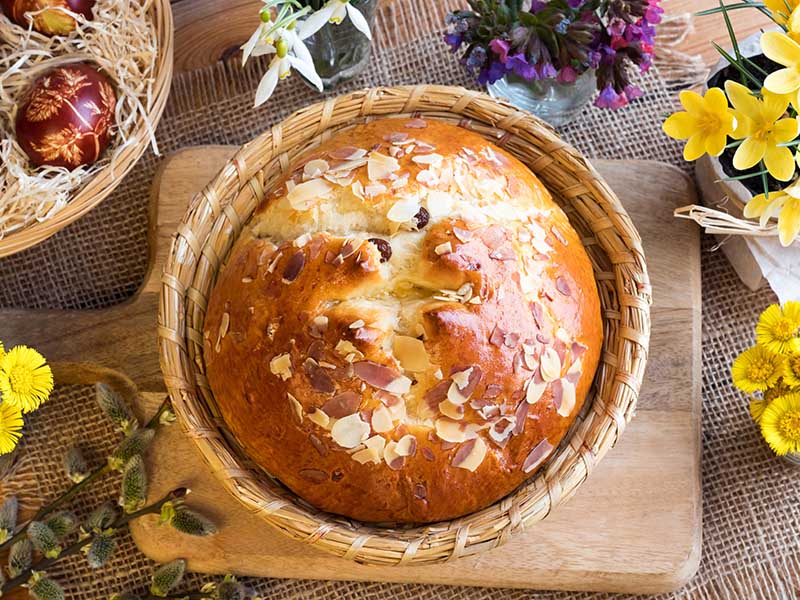
Traditionally, this sweet bread was widely used as an Easter treat back in the 15th century, especially to honor and enjoy Holy Saturday. You’ll find the sign of a religious food in Mazanec by the symbolic cross lines that have been formed before baking.
However, it’s not rare to find Mazanec nowadays all year round. Most bakers in Czech will mix raisins, rum, and lemon zest into their dough and garnish it with some almond slices or oat before bringing it to the oven.
21. Trdelník – Cinnamon Pastry
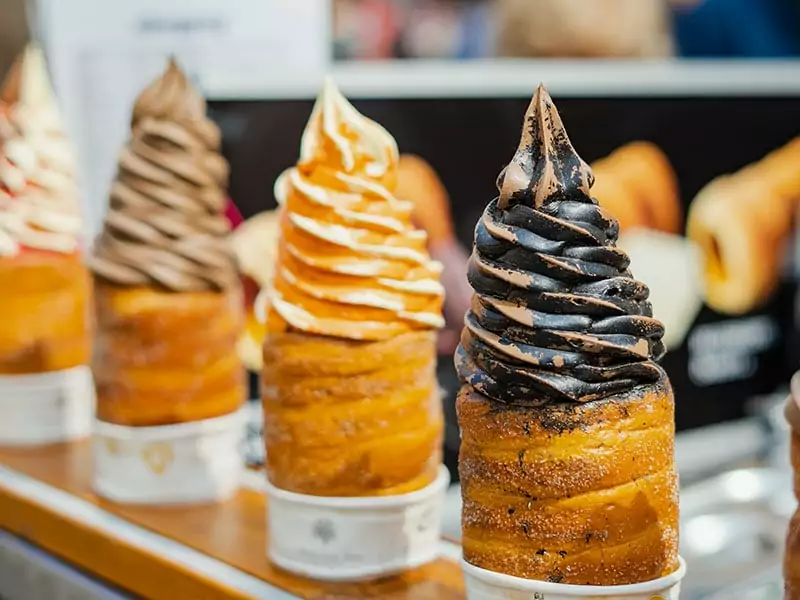
The origin of this pastry is believed to be Székely Land, when it still belonged to Hungary in the medieval period. You can assume Trdelnik is a Czech version of chimney cakes.
People make Trdelnik sweet yeast dough, coat it with granulated sugar and butter, attach it to a metal tube, and spit-roast the dish to complete.
Nowadays, Trdelnik is rarely eaten on its own but often sprinkled with some powdered cinnamon to enhance the flavor. A common way to serve Trdelnik, which you can see as street food, is to top it with soft ice cream.
22. Bramborák – Potato Pancake
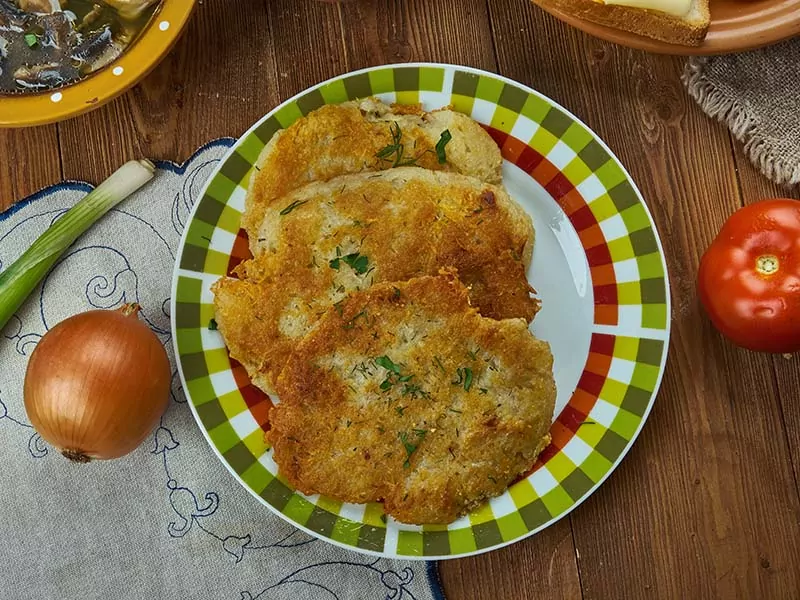
Though Bramborak is one of the most well-loved breakfasts in Czech, the indigenous sometimes use it as a drinking bait. This typical pancake has grated potatoes, egg, milk, and flour.
Since this is a highly affordable and easy-to-make dish, you can find it almost everywhere in Czech, from market stalls to high-end restaurants or even the frozen products you can see in the supermarket.
You can even make it yourself at home, as long as you’re in hand with caraway and marjoram. Without these spices, all you can get is a “regular” potato pancake, not a perfect Czech Bramborak.
23. Utopenci – Pickled Sausages
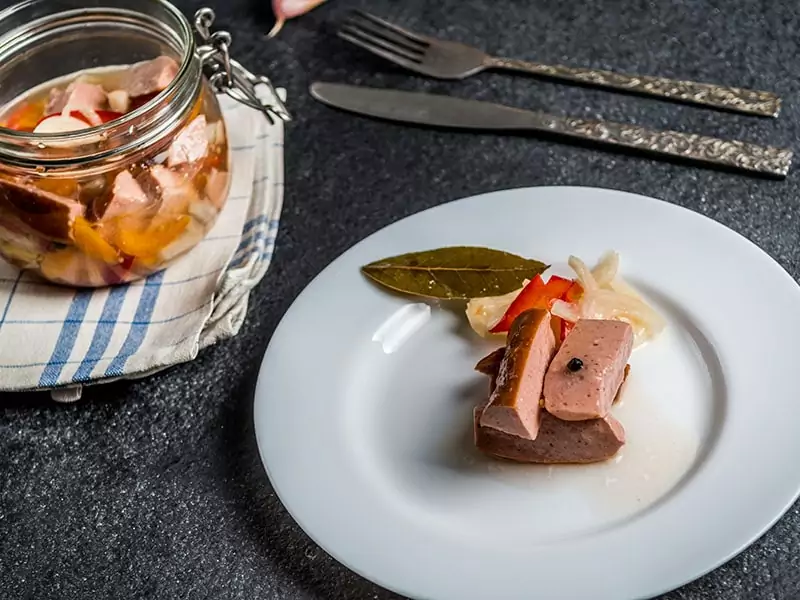
The translated name of the dish will hesitate you: drowned men. There are two different rumors about its name; the first one is about a pub owner – the inventor of this dish – who was found drowned to death one day while working in his mill.
The other one is less scary since it only describes the pickling method. The sausage that is mainly used for this dish is Špekáčky, a cultural Czech smoked sausage. It’ll be cut in half or quarter, then put in the pickling jar along with multiple veggies, floating like a “drowned man”.
Regardless of the origin, the recipe of Utopenci also includes bay leaves for a unique flavor, as well as pepper and other spices. And as with many pickled dishes, it’s best to be served cold or chilled.
24. Tatarák – Steak Tartare
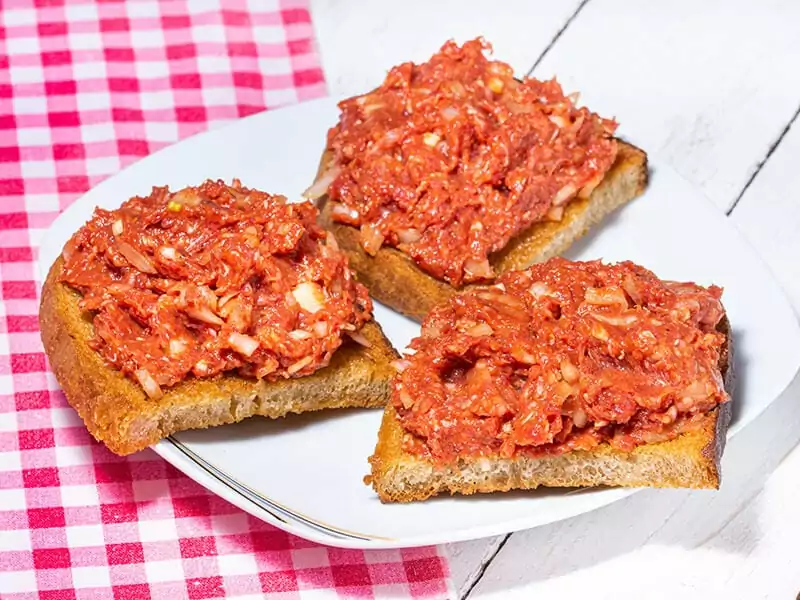
A French culinary influence, Tatarak is a counterpart of the worldwide known steak tartare. Czech chefs would identify their Tatarak as an appetizer dish due to its small size when serving. However, it can also be enjoyed as an excellent drinking bait.
You can now easily find Tatarak in almost any restaurant menu in Prague. When serving, the chefs would prepare minced beef, onions, garlic, and spices. Then they’ll neatly shape the mixture and top it with an egg yolk.
Czech Tatarak always comes with toasted bread slices, as well as multiple sauces. And the proper way to enjoy it’s first to mix the meat with the yolk, then spread the mixture on your toast.
Have you ever tried Czech steak tartare? Let’s see how the locals enjoy it!
25. Koprová Omáčka/Koprovka – Dill Sauce
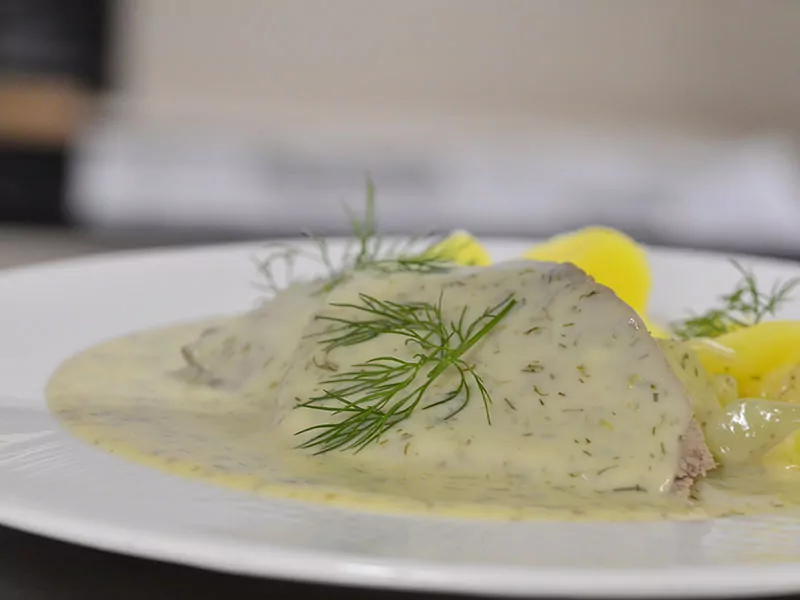
This is literally the sauce version of Kulajda, the creamy dill soup that I’ve mentioned above. And of course, the critical difference is the consistency of Koprovka is thick enough to be used as a sauce.
This sauce also consists of mushrooms, potatoes, fresh dill, and pickled dill is sometimes added. Poached egg and sour cream are also excellent additions if you’re not a vegan who avoids all dairy products.
However, since most modern restaurants usually add meat elements to their Kulajda soup, it’s not recommended for vegetarians.
26. Rajská Omáčka – Sweet Tomato Sauce
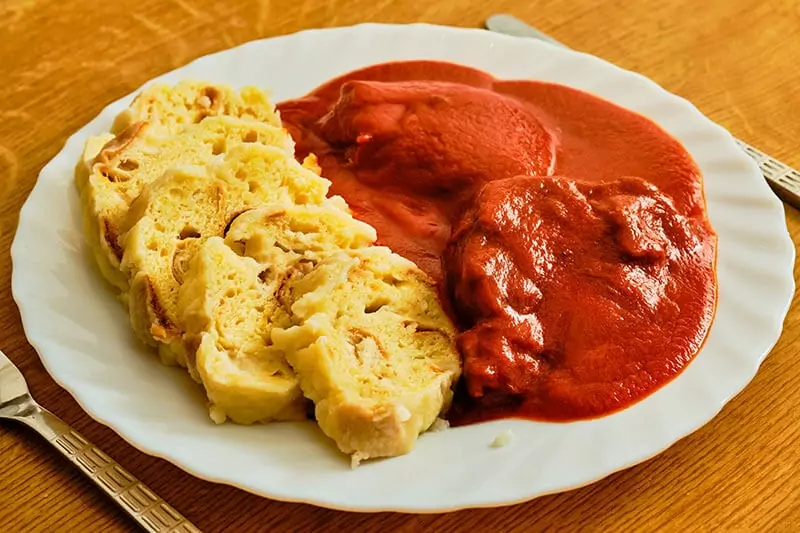
It’s definitely not the same sour ketchup you usually get in the United States! While the base is the same, you can consider tomatoes only the base for coloring in this sauce. That’s because other spices have outweighed the sour flavor of tomatoes.
Bay leaf may be the first thing you’ll taste when trying this sauce, followed by allspices, peppercorns, and sometimes cinnamon. Thyme and basil are other herbs that often appear in this sauce during summer.
All the ingredients could be blended before or after simmering on heat. Rajska Omacka can also be vegetarian or non-vegetarian. And it’s also a perfect appetizer combined with a small bread slice.
Always Fulfill Your Czech Trips With Its Cuisine!
Though this beautiful country is famous for its scenery and culture, it’s really hard to talk about Czech without mentioning its gastronomy. Whether you’re ready to pay for anything or travel on a low budget, the foods there always give you more than expected!
Have you found the treasures on the food list? Is there any dish that catches your intention? Are there any concerns about Czech cuisine? Let me and other readers know in the comment section!
Also, don’t forget to share this article! Maybe some of your friends are also into Czech cuisine as much as you are. Lastly, let’s complete your plans for the next Czech trip with its beautiful foods.
